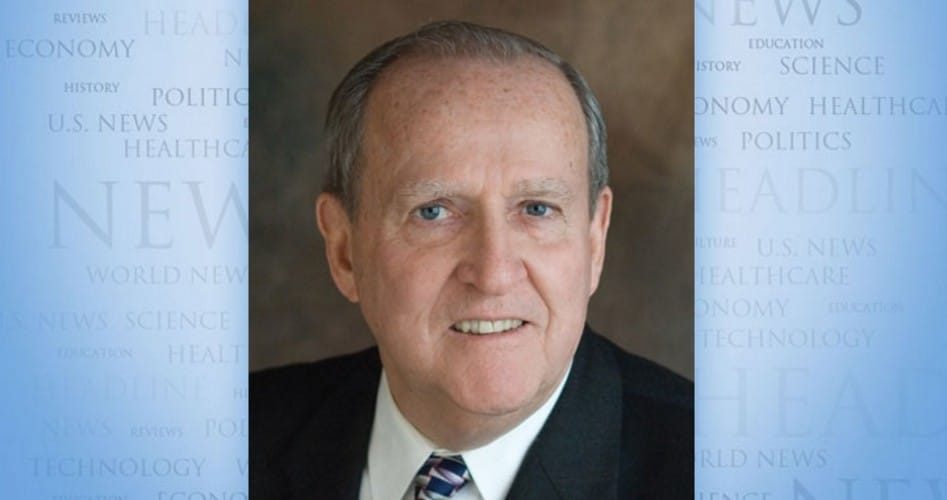
Our nation has been saddled with two major political parties for more than a century. Some Americans say this is good for the nation and especially beneficial for preventing crackpots and dangerous individuals from running for president.
But there is no constitutional requirement that voters should only be given the choice of a Democrat or a Republican in a presidential election. Then let’s add the fact that little-known forces have worked behind the scenes to profit by entering and backing an independent or a hastily promoted spoiler.
Consider what happened in 1912. Republican President William Howard Taft sought reelection and was widely expected to serve the nation for another four years. One of his key issues was opposition to the Aldrich Plan, a proposal to award power over money and banking to a proposed new agency. Not an opponent of the supposed need for something new in this sensitive field, Taft was clearly committed to his own version of what it should be. The Aldrich Plan was widely known for association with Rhode Island’s Senator Nelson Aldrich, a crony of J.P. Morgan and his banking interests. There were enough Americans who could be counted on to resist anything with the name Aldrich on it.
In addition, Aldrich had been one of the seven men who produced the Plan at the highly secret 1910 meeting held at Georgia’s Jekyll Island. Taft’s Democrat opponent, Woodrow Wilson, had already become close to the Svengali-like Edward Mandell House who favored what Aldrich had offered. The Jekyll Island “conspirators,” described by banker Frank Vanderlip, one of the seven, needed Taft out of the way. And they accomplished their goal by arranging to have former President Teddy Roosevelt run as the candidate of the freshly minted Progressive “Bull Moose” Party.
The scheme worked exactly as its creators hoped. In the 1912 election, Roosevelt gained 4.1 million votes (27 percent of the total) and 88 Electoral College votes. Taft garnered 3.4 million votes (23 percent) and eight Electoral College votes. Wilson won 435 Electoral College votes while garnering 6.3 million votes (42 percent of the total). Close to a million voters chose Socialist Party candidate Eugene Debs who garnered close to a million votes but no Electoral College votes. The bankers who financed Teddy Roosevelt celebrated the victory of their real choice, Woodrow Wilson. Along with Wilson, Colonel House moved into the White House where he would serve as Wilson’s top advisor.
Through the years, third party or independent candidates have intentionally or haphazardly impacted other presidential races. Early In 1992, independent H. Ross Perot threw his hat into the ring. When it looked like he might actually win the presidency by defeating both the incumbent Republican George H.W. Bush and Democrat Bill Clinton, he shocked virtually everyone by announcing that he was no longer a candidate. He stayed out of the race for several months and then told the nation on October 1st that he was again a candidate.
The 1992 Perot phenomenon gained approximately 20 million votes (approximately 19 percent of the total) but no Electoral College votes. A high percentage of his backers would have chosen Bush thereby helping Bill Clinton to win the presidency. Four years later after creating the Reform Party, Perot was again a presidential candidate. This time, he garnered only 8 percent of the votes nationally, most of which would likely have gone to Republican Bob Dole. In both 1992 and 1996, President Bill Clinton actually benefitted because of the presence in the races of the maverick independent, Ross Perot.
Other notables who tried the third party route included Alabama Governor George Wallace in 1968 and 1972. South Carolina Senator Strom Thurmond tested the waters in 1948. Neither of these two got very far although each received several dozen Electoral College votes. Then in 2000, Green Party presidential candidate Ralph Nader appeared on ballots of only 43 states and garnered only 2.8 million votes nationwide. But 97,421 of his votes were cast in Florida where the extremely close race between Democrat Al Gore and Republican George W. Bush led to several weeks of recounting to determine the winner. Eventually, the state’s 25 Electoral College votes went to Bush after he was declared the victor in Florida by a mere 537 votes out of six million cast in that state. Florida’s 25 Electoral College votes went to Bush and these were enough to declare him not only Florida’s winner but also the nation’s new president. He moved into the White House, stayed for eight years, and never thanked Ralph Nader for what he had done.
Here we are early in 2019 and the nation finds itself already plunged into the 2020 presidential race. Close to a dozen candidates have announced their desire to succeed Donald Trump. One likely to swell that number is “lifelong Democrat” and Starbucks billionaire Howard Schultz. He has already announced a possible run for the White House as an independent. Democrats immediately insisted that such a candidacy would help Donald Trump by drawing votes away from whoever might emerge as the Democrat nominee. Schultz countered with a rather humorous claim that whoever wins the Democrat nomination could spoil his chances as an independent.
The 2020 election won’t occur for almost 20 months. Will Schultz be a candidate? Will there be a new political party or other independents? Will Donald Trump be the GOP candidate? No one knows for sure. But no one should discount the possibility of a third, a fourth, or possibly even more independent candidates and their possible effect on who will be the ultimate winner.
John F. McManus is president emeritus of The John Birch Society.

